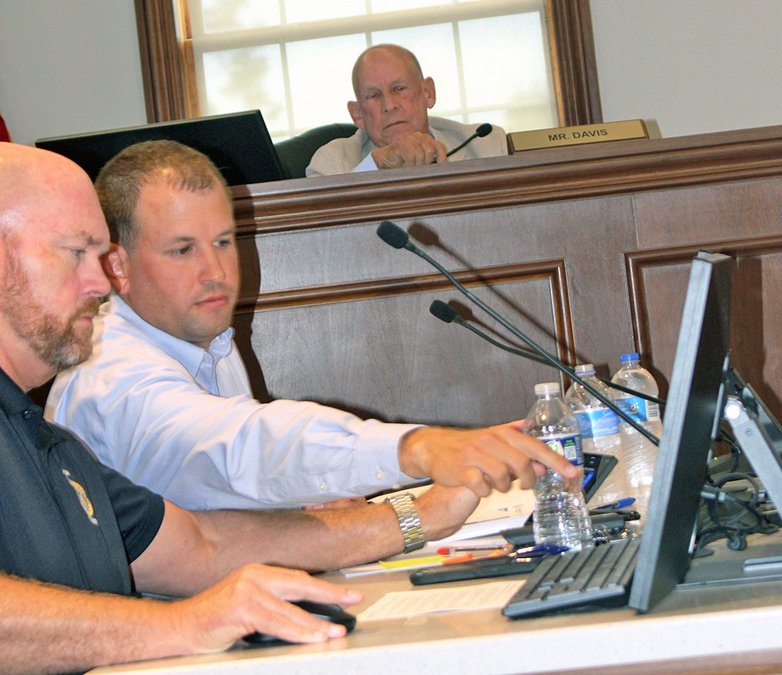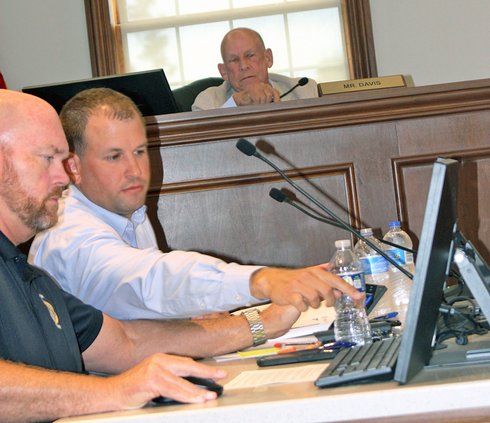Statesboro’s city planning and development office notified its Bulloch County counterpart earlier this month of a property owner’s request to have a 714-acre tract of land annexed into the city limits for a subdivision that could eventually contain 1,800 to 2,100 housing units.
The concept plan has since been revised downward to 1,794 units, but this remains Statesboro’s largest annexation request, and largest single subdivision plan, in memory.
The city’s notice to the county was dated July 2. The city also notified the Bulloch County Schools district office, as required under state law for annexations. Because of the size of the proposed Blue Fern Village development on Burkhalter Road, a “Development of Regional Impact” report was also required. The Coastal Regional Commission of Georgia prepared the DRI report for the city of Statesboro, completing it July 17.
Now the annexation request is slated to go to City Council for a public hearing during its second regular meeting of August, at 5:30 p.m. Aug. 20. Meanwhile, the city Planning Commission, which no longer has a direct role in annexation, is slated to consider requests during its 5 p.m. Aug. 6 meeting from Blue Fern Management LLC for a zoning change from the default R-40 to Planned Unit Development and a “mixed use” variance to also allow small commercial developments within the area proposed to be annexed.
Like a series of smaller annexations Statesboro has completed in the past several years, this large one is being requested by the owners and developer. Asked if city officials want to annex the property, Statesboro City Manager Charles Penny noted that annexation is the only way the city can grow in area and that Georgia’s laws make a city-initiated annexation difficult.
“The only way the city grows is through annexation, and our council, in the time that I’ve been here, they have not done any city-initiated annexation,” he said Wednesday in a phone interview. “Our laws are not necessarily designed in a way that makes it really advantageous for cities just to annex. The way we annex is by people voluntarily coming forward to be annexed.”
Owners and developer
As of the July 2 notice, the owner of the tract, which is on the west side of Burkhalter Road and south of the current city limits and Excalibur Court, was JCWSJR LLC, but the annexation application request form also shows Jeff Pope beside the LLC name as owner. The county Board of Tax Assessors database lists an April 2021 “no sale” transfer of the property by previous owners Jeff Pope and Ronnie Pope, who are local, to the limited-liability company.
Blue Fern Development, a Redmond, Washington-based company, is identified as developer on the conceptual plans.
“Annexation is important for us to be able to grow as a city, and that’s how we grow our tax base,” Penny continued. “So, are we interested in being able to grow? Yes, that’s a part of operating a city. … Why would we grow? We’ve got demand for housing; the city has the infrastructure, the water and sewer. People that are developing want to be able to use our infrastructure.”
Conceptual plans available to the Herald at this point were those from the packet that Statesboro city Planning and Housing Administrator Justin Williams sent to Bulloch County Planning and Development Director James Pope (who is not related to the property owners) on July 2. They give the range of 1,800 to 2,100 total housing units, but this has been reduced to 1,794 units, Williams said July 24.
A notice he sent for publication in the newspaper of development requests going to the council for Aug. 20 hearings cites the 1,794-unit total for the rezoning.
Mix of housing
Housing types within the development would include townhomes, duplexes, “casitas” or small cottages and single-family homes on lots ranging from 3,500 square feet to 6,200 square feet, according to the concept drawings. Not all of the area would or could be developed. The drawings show clusters of housing lots, accessed by loops of subdivision streets, nestled around some central regions of “preserved jurisdictional wetlands.”
The proposal calls for the large subdivision to be developed in up to six phases. With each phase afforded 18 months, they would take nine years to develop, if construction occurs without overlap between phases. The anticipated timing of the first phase is state as Q3 2025-Q1 2027, so beginning third quarter 2025, or roughly one year or more from now.
Burkhalter traffic
With previously approved development, city and county officials were already discussing the traffic load on Burkhalter Road as a concern. Within the DRI report, a two-page submission by the Bulloch County government, with County Manager Tom Couch’s name at the end, focuses on this issue.
He noted that Blue Fern Village would abut Burkhalter road in unincorporated Bulloch County for 1.2 miles, with a total length of 2.6 miles from intersection to intersection.
“There is no known traffic study that has been performed, but at build out the development could generate in excess of 20,000 trips per day,” the county’s submission states. It notes that the road condition is currently level of service “A” but adds that this “could decline.”
“The base construction of Burkhalter Road is not favorable to the level of traffic proposed,” states the county’s section of the DRI report. It also states that the developer would be required to agree “to commit a proportionate share of capital improvements” to be identified in a traffic study.
Since last fall, the county and city have had a planning and engineering firm, Goodwyn Mills Cawood working with them on a new, shared Long-Range Transportation Plan for 2025-2045. Local officials hope this plan will be completed by the end of 2024, but it alone will not answer all the questions related to Burkhalter Road and the newly proposed development, which will require a more specific kind of study and planning.
“Traffic impact analysis is always going to be needed on these type projects,” Penny said. “The Transportation Master Plan is more global in looking at our needs. The traffic impact analysis gets more granular, or gets down into the details of how these neighborhoods are going to be impacted.”
The DRI report gives an estimate of $600 million for the Blue Fern Village development’s economic impact at complete build-out.
The Ogeechee Riverkeeper organization contributed a lengthy statement to the report, calling for protection of Little Lotts Creek and for the city to prioritize construction in the less environmentally sensitive portions of the property.




